An Uncommon Wealth
The ACBN's 50 States Project hits the Bluegrass State. Eat it, Sufjan. That's three.
Twice recently on The Action Cookbook Newsletter, I’ve dedicated entire editions of the Friday food-drink-and-more-good-things rundown to celebrating individual states, a tongue-in-cheek recreation of indie-folk singer Sufjan Stevens’ much-discussed-but-never-really-real “Fifty States Project”, a project that resulted in wonderful and timeless concept albums about two states, Michigan and Illinois.
I followed that same path, featuring content centered on Michigan and Illinois last month. But today? I’m taking this one step further, with a third state.
Or, to be more precise… a commonwealth.
That’s right, folks. It’s Derby Week here in my adopted home state of Kentucky—an event and time of year absolutely I adore, and ruminated on in Monday’s newsletter—and so I’m focusing the full strength of this Friday’s effort on things from The Bluegrass State, a complex and oft-misunderstood place that’s got a whole hell of a lot to offer if you just know where to look.
Kentucky takes a lot of shit from people outside of the state, and only some of it is deserved. Like any place, it’s not without its problems. It’s produced some of the worst politicians ever sent to Washington, and often lags to the bottom quarter of state quality-of-life indexes. It’s also a gorgeous place—in my own personal estimation, the prettiest state east of the continental divide—with a rich, unique culture that’s made timeless contributions to the worlds of music, arts, food, and more.
(Oh, and The Greatest of All Time.)
You could spend a lifetime here and never fully understand Kentucky, but spend even a few days here and I bet you’ll feel something. It’s a place that’s all its own, stubbornly and forever itself.
….in conclusion, Kentucky is a land of contrasts.
Let’s make some stew.
7A) Chicken Soup If You Sick, Burgoo If Stew Thick
There are a number of routes we could go today in picking a food to celebrate the Derby, and more broadly Kentucky. There’s the Kentucky Hot Brown, the iconic turkey-bacon-and-Mornay sauce sandwich from Louisville’s Brown Hotel. There’s Benedictine, the cucumber-and-cream-cheese spread that originated here. Deviled eggs are a Derby Party mainstay, and picnic foods like biscuits and chicken often travel in box lunches taken to the Churchill Downs grandstands. (You can bring your own food to the race, and there’s a cottage industry around helping you do so.)
But today, I want to talk about the king of stews.
I want to talk about burgoo.
Both a Kentucky original and a cousin to the further-South staple of Brunswick Stew, burgoo is a thick, rich, meaty stew that’s made with—well, it’s made with lots of things, based on whatever you have available. Traditional versions might center on mutton, venison, pork, fowl, possum, squirrel, turtle—you name it. More modern versions generally focus on some combination of mutton or lamb, beef, pork and poultry. Whatever ends up in the pot, it simmers low and slow, and for a long time—you’ll want to commit the better part of a day to this, at least—and in the process, it turns into something magical.
I was speaking about burgoo recently with my friend Jonathan, who grew up in Kentucky eating it, and he recalled that the Sunday after Derby was “traditionally the day of the old timey Kentucky Colonel Picnic. They’d serve burgoo out of, like, 80-gallon cauldrons. It was amazing. Unfortunately, the picnic stopped a decade or so ago. You only got one BBQ meal, but unlimited burgoo, so we would bring it home in the kind of insulated jugs you use for water at soccer practice.”
[scratching chin] [into voice recorder] Stew as a sports drink? Investigate further.
Anyways, I don’t have an 80-gallon cauldron, but this did call for digging out the largest pot I had, and making so much that my freezer is now full of burgoo. If I could figure out how to attach a bowl of it to this email, I’d send you all some.
Instead, the recipe will have to suffice.
Kentucky Burgoo
The first section of this ingredient list should really just be “five to six pounds of assorted meats.” Obviously this is a bit vague, now, isn’t it? But the central ingredient in burgoo is ambiguity, and as described above, I worked with what was available to me. So here’s what that meant for me:
2 pounds cubed lamb shoulder
1 lb oxtails
1.5 lb pork neck bones
1 ham hock
1 chunk of country bacon
1.5 lb leftover smoked brisket
1 lb bone-in chicken thighs
This is a great vessel for barbecue leftovers and gamier bone-in meats that’ll benefit from the very long cook time. Okay, now the rest of the ingredients.
6 quarts water
several sprigs fresh thyme
a handful of fresh sage (or 1 teaspoon dried sage)
2-3 bay leaves
1 Tbsp red pepper flakes
3 cups finely shredded cabbage
1 lb diced potatoes
1/2 lb carrots, finely chopped
1 green bell pepper, finely chopped
2 leeks, finely chopped
28 oz can pureed tomatoes
1 bag dried lima beans (soaked overnight)
A glug of bourbon*
1 15-ounce can of corn
1/2 cup Worcestershire sauce**
1/4 cup sorghum syrup (barring that, blackstrap molasses)
1/2 cup parsley, chopped
*I do not trust precise measurements for adding bourbon to a recipe like this. A glug is what you feel it in your heart of hearts to be, and if you don’t drink, that can also be nothing.
**I know this sounds like a lot but it’s not.
In a very large pot—I used a 21-quart canner, but a 16-qt stockpot would be just about right—add the meats, and cover with water, and add the thyme, sage, bay leaves and red pepper flakes. Some judgment will be required based on what meats you’re using—poultry and already-smoked meats won’t need as long in the water as the other things I’ve listed. The heavier stuff should go for four hours; the “lighter” stuff, as it were, might only need two and can be added later. With that in mind, bring the pot just to a boil, then reduce to a bare simmer and let it go for four hours total.
(I’ll wait.)
Okay, we’re back! At this point, using tongs and/or a slotted spoon, remove the meat from the broth, debone and chop, or—preferably, if you have a stand mixer—use the paddle attachment to quickly pull the meat. To the still-simmering broth, add the potatoes, cabbage, carrots, bell pepper, leeks, tomatoes, lima beans, bourbon, and pulled meats. Simmer for another two hours, stirring very occasionally.
After that time—we’re now six hours in, for the record—add the corn, Worcestershire sauce, sorghum syrup and parsley, and simmer for a half-hour or so.
And that’s it! Let’s see what we’ve made.
Oooh, boy.
Season with fresh pepper and serve with cornbread.
I hope you saved room for dessert.
7B) This pie is in no way affiliated with Kern’s Kitchen
My first real entry to Kentucky cuisine came from my wife—who is not a native Kentuckian herself, but a longtime aficionado of the state who made frequent trips down from Indiana as a child to attend Saddlebred horse shows with her family. When we met in New York City more than a decade ago, she introduced me to the particular wonders of one classic Kentucky dessert, one that would always feature prominently in the Derby parties we started throwing each May.
What’s it called?
Well, that’s a little more complicated.
You see, a chocolate-walnut pie has been served many places, but in 1968, the Kern family—owners of Kern’s Kitchen bakery—trademarked the name “Derby Pie”, and has been intensely litigious in protecting that claim ever since, somewhat understandably considering both how wonderful the dish is and how big a seller it is for the pie-maker, whose trademark-bearing Derby Pies sell in grocery stores around the state.
This is not that pie, for two reasons. First, I don’t like getting sued. Second, I prefer pecans to walnuts, and that’s the version my wife introduced me to.
With that in mind, here is a recipe for a Chocolate Pecan Horse Race Weekend Tarte.
Chocolate Pecan Horse Race Weekend Tarte
1 cup sugar
1/3 cup flour
1/3 cup salted butter, melted
2 eggs
1 tbsp bourbon (add more to taste, but be careful, it goes a long way and can overwhelm)
1 cup semi-sweet chocolate chunks
1-1/2 cups coarsely chopped pecans (or walnuts)
9” pie crust, homemade or prepared
Preheat the oven to 350F.
Mix together the flour and sugar, then stir in the butter until the dry ingredients are coated. Stir in the eggs, and then the bourbon, followed by the chocolate and nuts. Pour into your prepared pie crust and bake for 30-35 minutes, until the top is golden brown.
It’s a pecan pie, but with chocolate and bourbon. What more need I say? It’s magnificent and I could eat a whole one in one sitting.
Hey, we’ve already opened that bottle of bourbon. Let’s do something we have to do.
6A) The Julep Trap
Stand-up comedian Lewis Black had a famous routine about candy corn, and his annual talking himself into it. “It’s corn… that tastes like candy!”, he would think, before invariably being disappointed in what candy corn actually is.
I have a somewhat similar relationship with the Mint Julep.
It’s an iconic drink, and the Kentucky Derby wouldn’t feel right without them. When done right, they can be very good—a classic cocktail of yore, adding just enough to turn some questionable spirits into something magical. When done poorly? It’s sickly-sweet and overwhelming minty, like drinking a Zima after brushing your teeth. You’re honestly just better off drinking straight bourbon, but Derby weekend and making the right decision don’t go together
I feel a very deep need to have a Julep on Derby Day, still. But I’m going to make it myself, and I’m going to try a little twist on things.
First, though, a story.
I attended the 2019 Kentucky Derby on assignment for SBNation, a race that featured an absolutely shocking ending when apparent winner Maximum Security was disqualified1 for interfering with War of Will and Long Range Toddy, thus allowing 65-1 longshot Country House to be named the winner. It was wild to see on TV, I’m sure; it was absolutely baffling to watch from the grandstand, where few if any viewers had seen the interference.
Now, the moment a Derby race ends, betting slips are discarded en masse. You don’t come to Churchill Downs to clean up your own messes; people just toss them away. I was sitting in the third-level boxes, directly underneath Millionaire’s Row—the towering skyboxes for the rich, famous and rich and famous. When that 2019 race first ended, many betting slips, now seemingly-worthless, rained down from the sky like ticker tape at a parade. Moments later, a stunning call boomed over the public-address system “HOLD ALL SLIPS”. The race results were in doubt.
After an interminable wait, one that saw myself and the people around me texting the people at home to ask what the hell is going on, the announcement was made.
Maximum Security didn’t win. Country House did.
Surely someone up there threw away a betting slip for a 65-1 winner, and I assume tears rained down into their juleps, salty and sweet.
That’s the inspiration for today’s first drink.
Millionaire’s Tears
10 leaves fresh mint
2-1/2 ounces bourbon, nothing expensive
3/4 ounce 1:1 honey syrup (hot water mixed with honey)
1/4 tsp smoked sea salt
Muddle the mint at the bottom of your glass—a tin julep cup, if you have one—and fill the glass with crushed ice. Add the salt, then pour the bourbon and syrup over the ice. Stir vigorously, until the glass is nice and frosty, then garnish with more mint.
Take note of the first picture: I’m using cheap bourbon and expensive honey. A Mint Julep is traditionally made with simple syrup or sugar cubes, but I say: if you’re going to adulterate a spirit with additional sugar, don’t waste your money on the good whiskey. Waste your money on the good sugar. I’m using Heaven Hill White Label, also sold as Quality House bourbon, an extremely good value player, and a very nice local small-batch honey. The honey adds a nice additional note, and the small amount of salt tempers the sweetness.
Is it a pretty good version of the drink? Yeah, it is.
But if a Julep isn’t your cup of tea? Well, I’ve got another option today.
6B) A Horse of a Different Color
The Kentucky Derby always falls on a Saturday—the first Saturday in May, that is—and the main event race features three-year-old Thoroughbred horses. The day before Derby, however, is headlined by the Kentucky Oaks, a race featuring three-year-old Thoroughbred fillies.2
Oaks Day—hey, that’s today—is a Big Deal in its own right, a day that (in normal years) sees huge crowds at Churchill Downs itself. Many schools and businesses in Louisville close for Oaks Day (my entire family is off today), and it’s a wonderful event all its own, one that has long been considered the race for locals to attend, many attending or throwing at-home Derby parties while out-of-towners go to the track on Saturday.3
While Derby Day has the Mint Julep, Oaks Day—a pink-clad affair—has its own signature cocktail, the vodka-based Oaks Lily, which also features cranberry juice, citrus and blackberries.
To be honest, I don’t usually have much use for vodka. It doesn’t bring anything to the table other than alcohol, and I like to make things more complex. With that in mind, I’m swapping out the vodka and gilding this lily.
The Gilded Lily
1-1/2 ounces cognac, like Hennessy
1/2 ounce orange liqueur, like dry curacao
1 ounce Rose’s lime juice*
1/2 ounce Bénédictine
2 ounces cranberry juice
Lemon wheel
Fresh blackberries
*Note: Rose’s lime is a sweetened juice, and this drink will verge on too tart if you use regular lime juice. If you do, use 1/2 ounce lime juice and 1/2 ounce simple syrup.
In a cocktail shaker filled with ice, shake the cognac, orange liqueur, Rose’s lime, Bénédictine, and cranberry juice vigorously, then strain into a glass filled with ice. A proper Oaks Lily is served in a stemless wine glass, but use the closest thing you’ve got. I decided to class up the joint with this vintage pressed-glass goblet. Garnish with lemon wheel and blackberry.
This? This one’s bound right for the winner’s circle. The fruit juices make for a smooth, springy drink, but the cognac and Benedictine add a background note of complexity that make it something more special.
(If you want to make a regular lily, just use two ounces of vodka in place of the cognac and Benedictine.)
5) That High Lonesome Sound
There’s no better distillation of the complex beauty of Kentucky, in my opinion, than the bluegrass and folk music native to the state, especially the rolling hills and hollers of eastern Kentucky. There’s lots of good routes that I could go in picking music today—Tyler Childers’ excellent Long Violent History, or Sturgill Simpson’s recent Cuttin’ Grass series.
Today though, I’m taking a recommendation I recently picked up from my friend Chuck McKeever—eastern Kentucky native Senora May, here with “All Of My Love”:
Her gorgeous music offers a clear-eyed repudiation of the image of a region shaped by no-account grifters like JD Vance. As she said in a recent interview:
Appalachia is a grossly misunderstood paradise. It is diverse and giving and completely rich in culture. Just listen to the music, taste the flavors, look at the growing, harvesting, preserving, the cherished knowledge passed on and shared and there’s no way to claim something different.
4) It’s An Agricultural Territory, Okay?
I love a good history lesson, and I love a good crime story. This week’s featured book offers up plenty of both.
Author Jim Higdon’s 2012 book The Cornbread Mafia: A Homegrown Syndicate's Code Of Silence And The Biggest Marijuana Bust In American History is an expansive history of family and crime in and around Marion County, Kentucky, leading up to the 1989 bust of the largest domestic marijuana-producing ring in American history, a cartel that would be dubbed “the Cornbread Mafia”.
The book puts everything in deep context, because a lot of context is necessary—starting from the early days of white settlement in Kentucky, on through Prohibition and the development of a robust marijuana trade after the Vietnam War. It’s informative, interesting, and more importantly—it’s damned entertaining.
3) Maybe I’m The Only Person Who Didn’t Watch This In 2020 But Just In Case
Surely I’m behind here, but nevertheless—if you didn’t binge it last summer, you need to come back to The Queen’s Gambit.
Based on a 1983 novel of the same name by longtime Kentucky resident Walter Tevis, this seven-part Netflix limited series follows a young woman, Beth Harmon, a brilliant Kentucky orphan who becomes a top chess prodigy while struggling with addictions to tranquilizers and alcohol.
It rides primarily on the stellar performance of star Anya Taylor-Joy, who captures Harmon’s brilliance, pain and struggle, but it’s also just very well-crafted overall; the right length, pace and tone. It makes me want to buy a chess set, when really I’ve got a brain more suited for checkers.
2) She Put $900 On The Fifth Horse In The Sixth Race; I Think Its Name Was Chips Ahoy
Hey now, it wouldn’t be a real Derby Week if I didn’t share the love, right?
Over the last few months, I’ve started giving back around here. I’ve done several rounds of sticker giveaways, and last week I offered up a few dozen books I’ve enjoyed (books I will hopefully get in the mail in the next few days.) Most exciting, I’ve started offering paying subscribers entry in a monthly drawing for what I call The Action CookBox—a prize offering that features many things featured in, or complementary to, the Friday newsletters—each one roughly a $100 retail value.
Today I’ve got another one coming at you, and it’s the biggest and best one yet—and every single item is tied to Kentucky.
IN THIS MONTH’S BOX:
Smoke and Pickles: Recipes and Stories from a New Southern Kitchen, an excellent cookbook from Louisville restaurateur Ed Lee
Bravetart: Iconic American Desserts, the best baking cookbook I’ve ever used, from Kentuckian Stella Parks
A box of Derby Bar Mix from Louisville coffee shop/bakery Please & Thank You
A pair of official Kentucky Derby 147 souvenir glasses
Hot Chow Chow (pickled vegetables) from Spring Valley Farms in Holland, KY
Blackberry Bourbon Chutney from Louisville producer Pop’s Pepper Patch, which hey this would be great on a Kentuckiana Hot Loin
Henry Bain Sauce, the signature condiment of Louisville’s historic Pendennis Club’s restaurant
Bourbon-smoked sea salt from Bourbon Barrel Foods
Distiller’s Select barbecue sauce from Louisville’s FDKY BBQ
Action Cookbook stickers, keychain and postcard
A neat box. I dunno, maybe you have a cat?
Here’s the link to enter. I will keep entries open until noon tomorrow, and then I will attempt to announce a winner just before the 6pm running of the Derby. (No iron-clad guarantees on that timing; it all depends on the number of bourbons I have beforehand.) The drawing is at random, and all paying subscribers are eligible.
If you’re only on the free email list, or came here from the web? Subscribe now, and you’ll be eligible too. It’s only $5/mo or $50/year, and no one has ever regretted it.4
1) Horse’s Best Friend
I am cheating a bit today.
Normally here I feature three reader-submitted pet photos, but I’ve included so much in this week’s edition that I’m bumping up hard against the ceiling of the email system’s size limit. I can only feature one more photo today, and so I’m going to do a little collage instead. If you’ve been following my internet presence for any length of time, you’ve surely seen one of these before.
This is Holly, my corgi, meeting my mother-in-law’s saddlebred horses at various points over the years, headlined by her iconic 2013 encounter with certified good boy Elwood (bottom picture).
While corgis are frequently seen in the horse world, Holly has never once been fond of these interactions. But I am, and I hope you are.
Have a terrific weekend, folks, and enjoy responsibly. Riders up.
—Scott Hines (@actioncookbook)
The owners of Maximum Security made noise for a long time about what they perceived to be the unfairness of their horse’s disqualification, but it was absolutely justified. The interference was both very clear and extremely dangerous, and if War of Will’s jockey had not wisely pulled back, it’s entirely possible that Maximum Security’s reckless maneuvering could have caused a pile-up that would have killed multiple horses and/or jockeys in front of 150,000+ spectators and millions of television viewers, something that would have been an absolute death knell for a sport that faces criticism both fair and unfair already. I feel very strongly about this.
Fillies can and often do compete in the Derby itself, though they are not a large portion of the field.
This is no longer really true, because Oaks and Derby tickets are typically sold as a package deal, and the Oaks has become quite a big event itself. Accordingly, many locals have shifted their plans to the Thursday of Derby week, colloquially known as “Thurby”.
This claim is unverified.



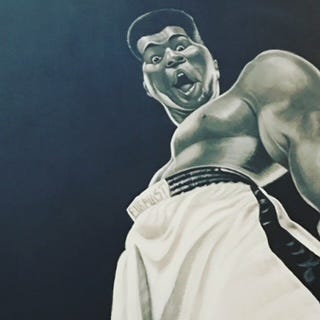
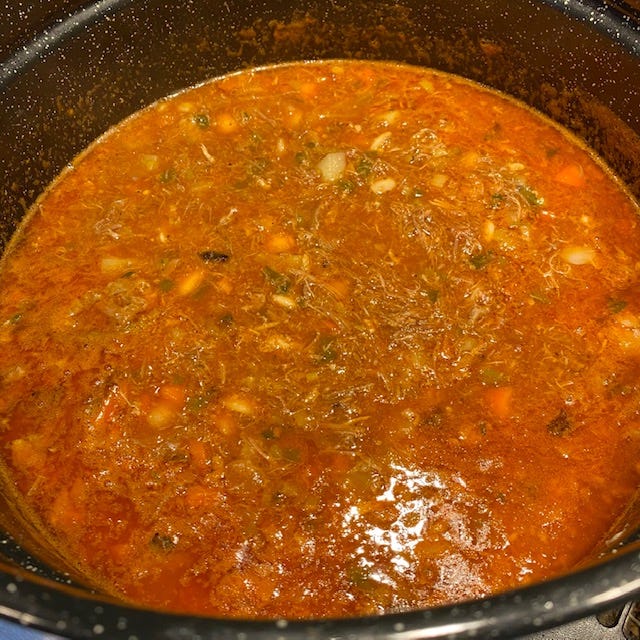
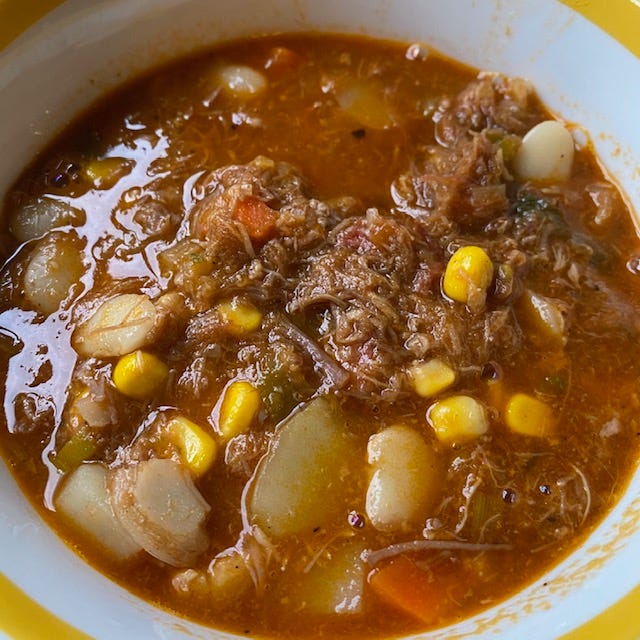
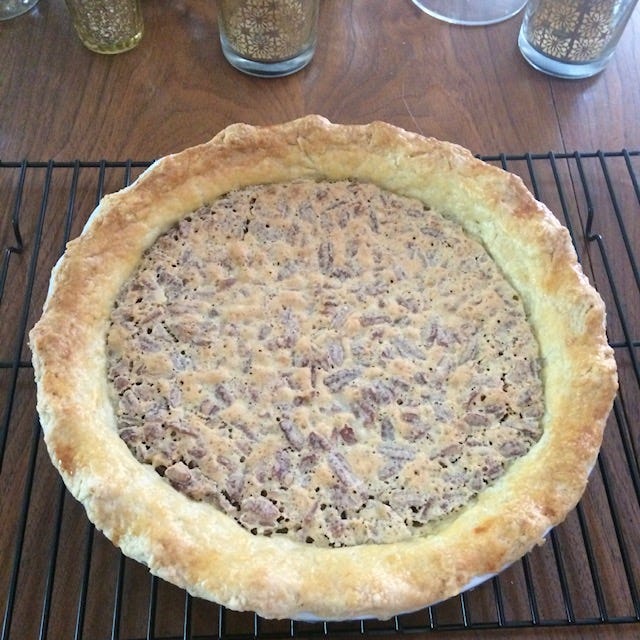
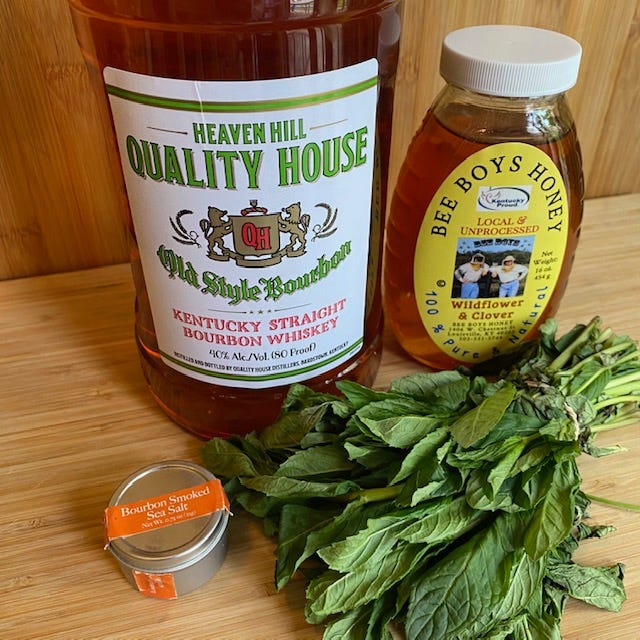
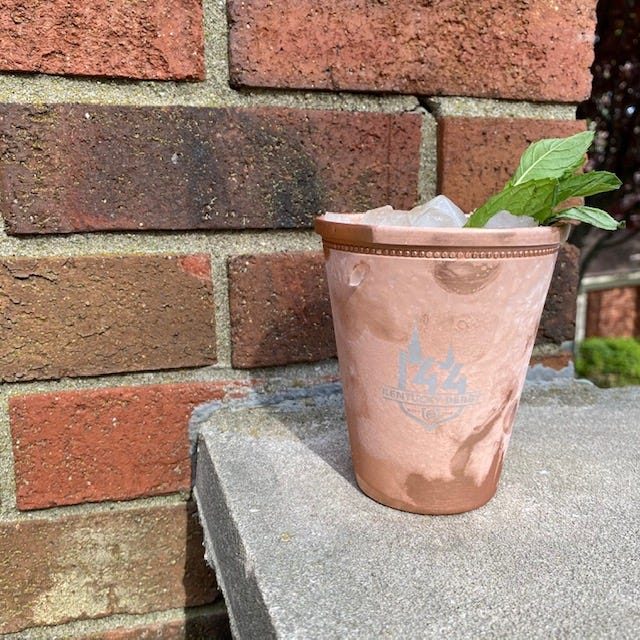
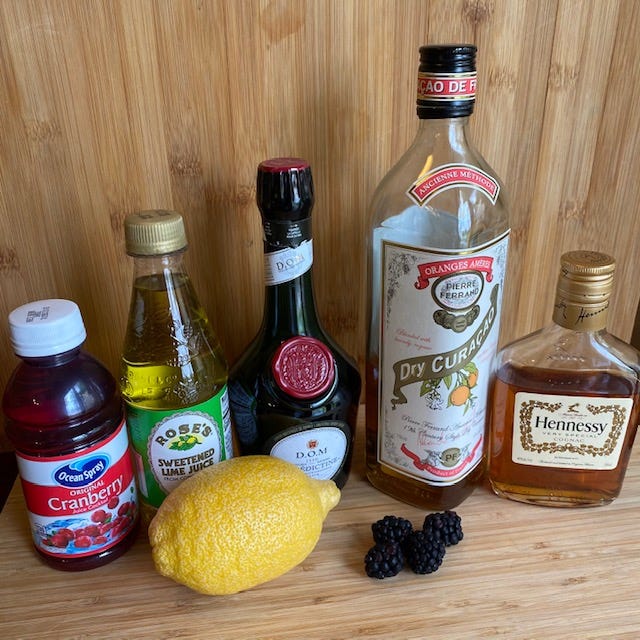
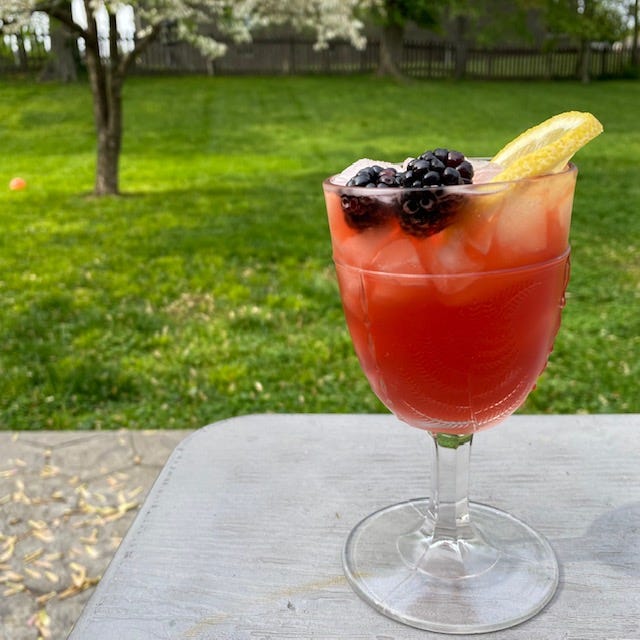
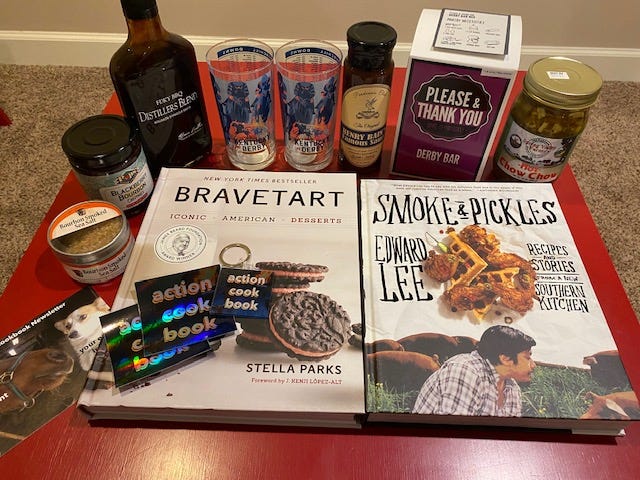
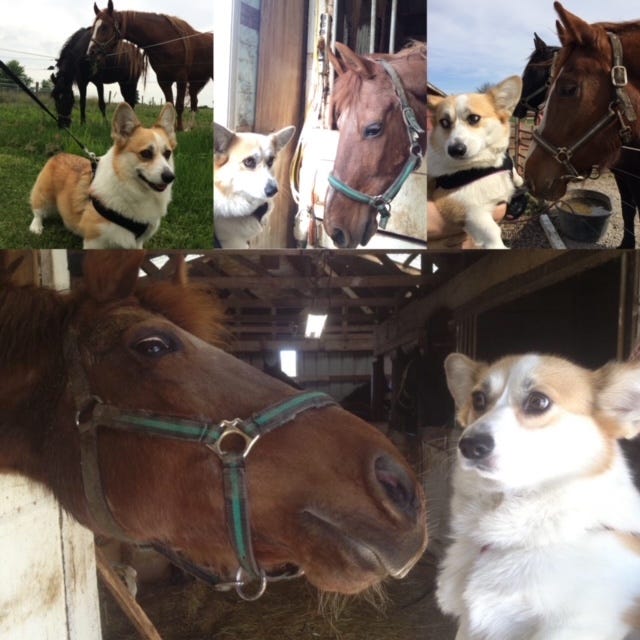
Apropos of nothing, I’m getting married this weekend. Can I get a woot woot in the chat
So if I were to try to take the stew, and put an Ohio twist on it in honor of the state's unique flag, it would be a Burgee Burgoo?